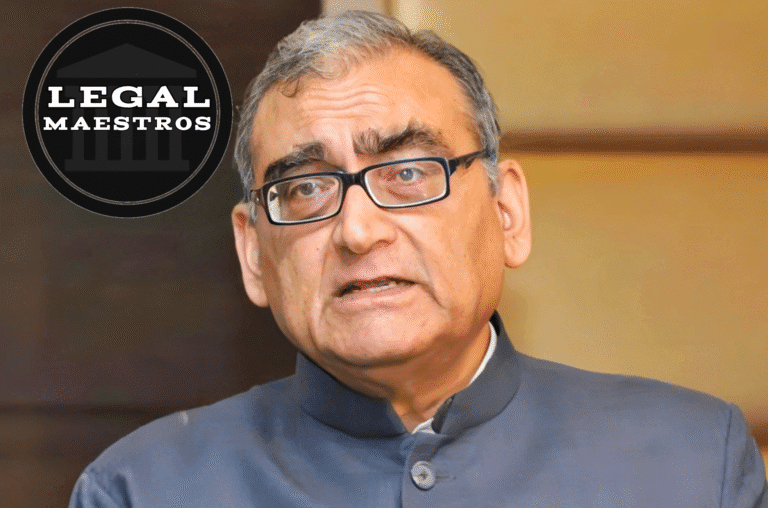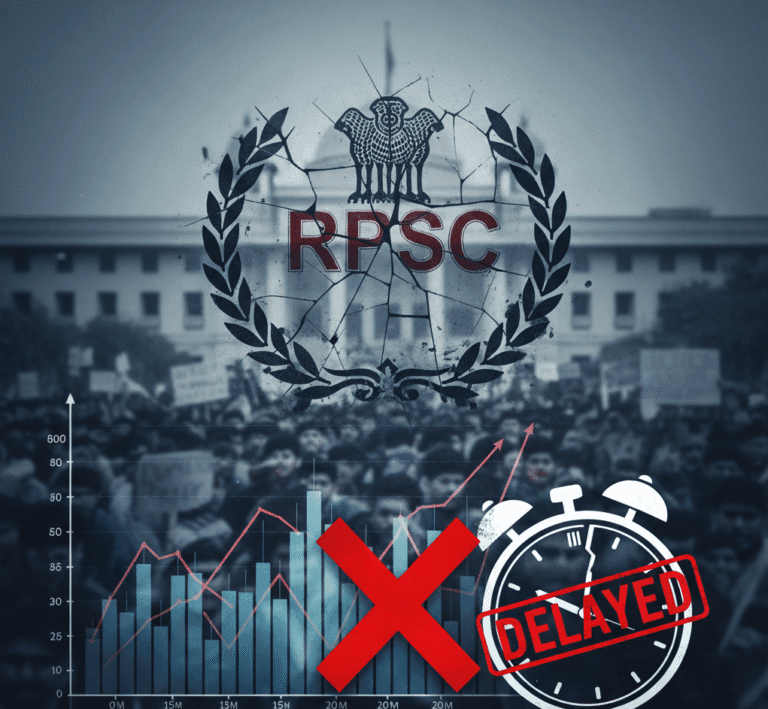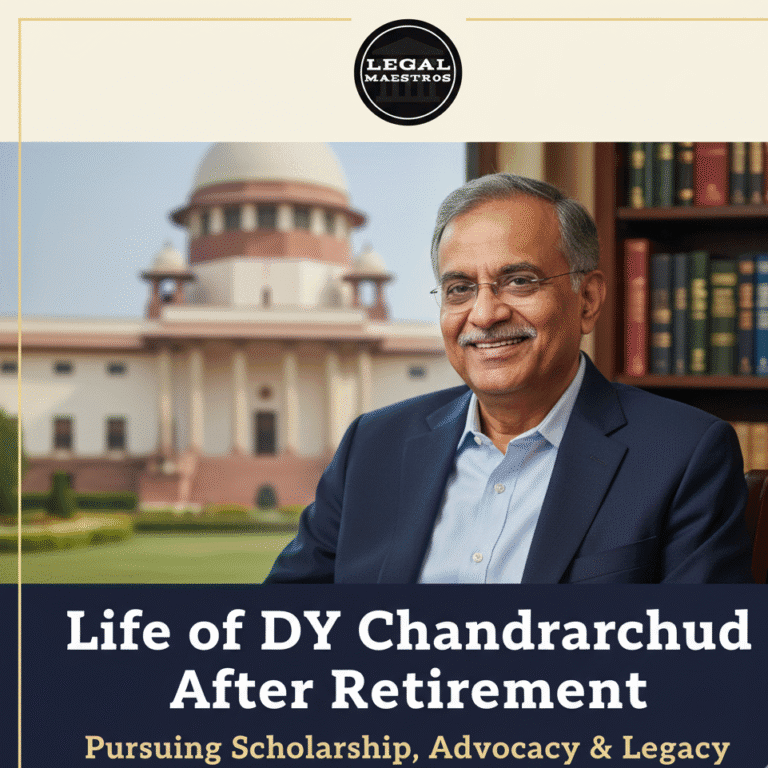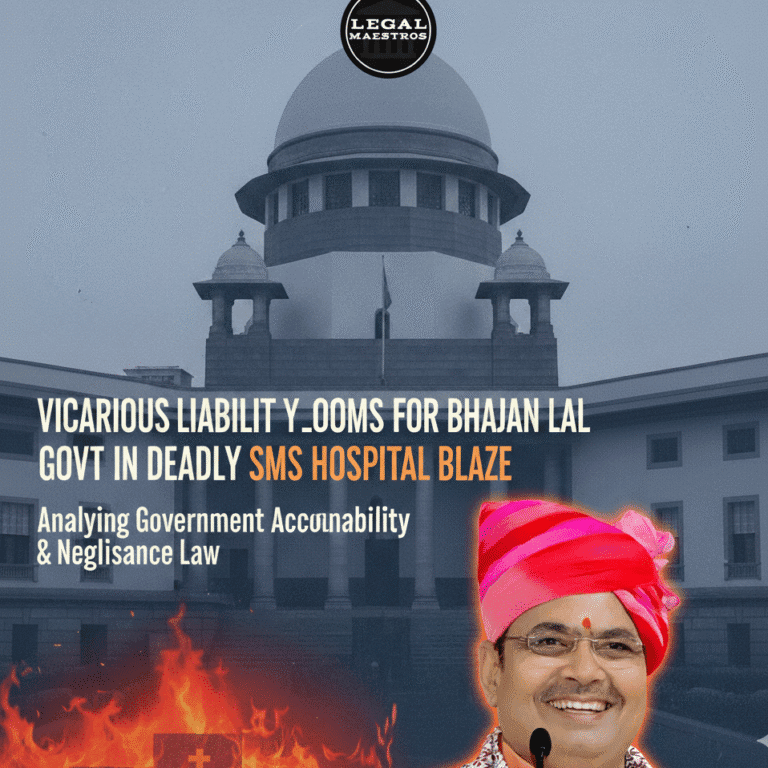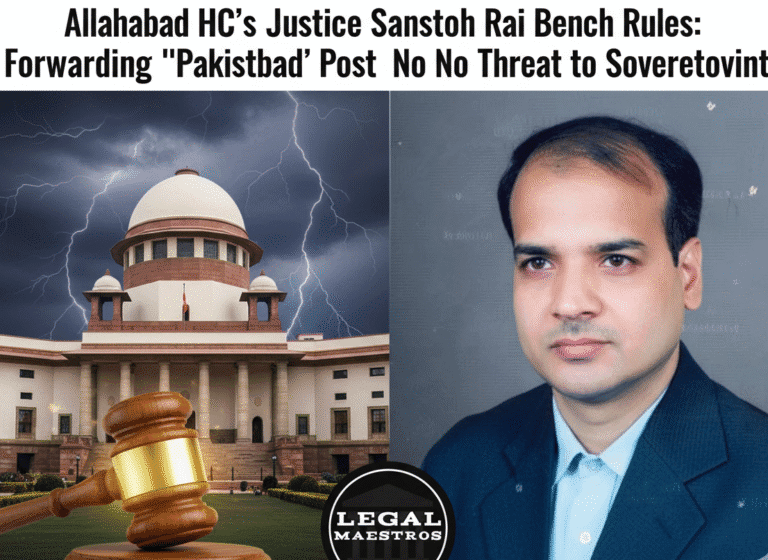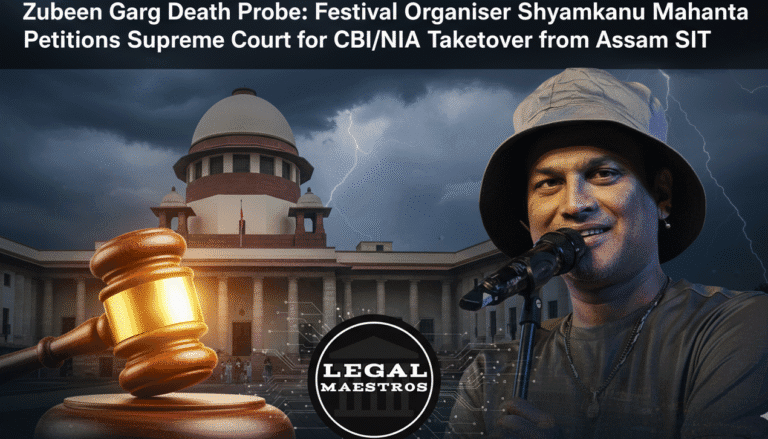
Stray Dogs
The Supreme Court yesterday passed an order suo motu directing all stray dogs in the Delhi-NCR region to be removed from the streets and confined in shelter homes
For any queries or to publish an article or post or advertisement on our platform, do call at +91 6377460764 or email us at contact@legalmaestros.com.
I respectfully disagree with such an order because it amounted to judicial encroachment into the domain of the executive, and hence was unconstitutional.
In Divisional Manager Aravali Golf Club vs Chander Hass, ( 2008 ) 1 SCC 683 the Supreme Court observed :
” Under our Constitution, the Legislature, Executive and Judiciary all have their own broad spheres of operation. Ordinarily it is not proper for any of these three organs of the State to encroach upon the domain of another, otherwise the delicate balance in the Constitution will be upset, and there will be a reaction.
For any queries or to publish an article or post or advertisement on our platform, do call at +91 6377460764 or email us at contact@legalmaestros.com.
Judges must know their limits and must not try to run the Government. They must have modesty and humility, and not behave like Emperors. There is broad separation of powers under the Constitution and each organ of the State, the legislature, the executive and the judiciary, must have respect for the others and must not encroach into each others domains ”.
In the same decision the Supreme Court also observed :
” In our opinion adjudication must be done within the system of historically validated restraints and conscious minimization of the Judges preferences. The Court must not embarrass the administrative authorities and must realize that administrative authorities have expertise in the field of administration while the Court does not. In the words of Chief Justice Neely of the West Virginia State Supreme Court :
For any queries or to publish an article or post or advertisement on our platform, do call at +91 6377460764 or email us at contact@legalmaestros.com.
‘ I have very few illusions about my own limitations as a judge. I am not an accountant, electrical engineer, financier, banker, stockbroker or system management analyst. It is the height of folly to expect Judges intelligently to review a 5000 page record addressing the intricacies of a public utility operation. It is not the function of a Judge to act as a super board, or with the zeal of a pedantic school master substituting its judgment for that of the administrator ”.
The Court quoted the observation of Justice Frankfurter, the celebrated Judge of the US Supreme Court, in Trop v. Dulles (1958) 356 US 86 :
” All power is, in Madison’s phrase, of an encroaching nature. Judicial powers is not immune against this human weakness. It must therefore be on guard against encroaching beyond its proper bounds, and not the less so since the only restraint upon it is self restraint ”.
Unfortunately there are many instances where judges have overreached into the executive or legislative domain.
As pointed out by Hon’ble Mr. Justice J. S. Verma, the former CJI, in his Dr. K.L. Dubey Lecture:
” The judiciary has intervened to question a mysterious car racing down the Tughlaq Road in Delhi, allotment of a particular bungalow to a Judge, specific bungalows for the Judges pool, monkeys capering in colonies, stray cattle on the streets, clearing public conveniences, levying congestion charges at peak hours at airports with heavy traffic, etc. under the threat of use of contempt power to enforce compliance of its orders. Misuse of the contempt power by a judge to force railway authorities to give reservation in a train is an extreme instance.
Recently, the Courts have apparently, if not clearly, strayed into the executive domain or in matters of policy. For instance, the orders passed by the High Court of Delhi in recent times dealt with subjects ranging from age and other criteria for nursery admissions, unauthorized schools, criteria for free seats in schools, supply of drinking water in schools, number of free beds in hospitals on public land, use and misuse of ambulances, requirements for establishing a world class burns ward in the hospital, the kind of air Delhities breathe, begging in public, the use of sub-ways, the nature of buses we board, the legality of constructions in Delhi, identifying the buildings to be demolished, the size of speed-breakers on Delhi roads, auto-rickshaw over-charging, growing frequency of road accidents and enhancing of road fines etc.
In my opinion these were matters pertaining exclusively to the executive or legislative domain. If there is a law, Judges can certainly enforce it, but Judges cannot create a law and seek to enforce it ”.
Similarly, Hon ble Justice A.S. Anand, former Chief Justice of India observed :
” Courts have to function within the established parameters and constitutional bounds. Decisions should have a jurisprudential base with clearly discernible principles. Courts have to be careful to see that they do not overstep their limits. With a view to see that judicial activism does not become judicial adventurism, the courts must act with caution and proper restraint. They must remember that judicial activism is not an unguided missile. Failure to bear this in mind would lead to chaos. Public adulation must not sway the judges, and it needs to be remembered that courts cannot run the government. The judiciary should act only as an alarm bell; it should ensure that the executive has become alive to perform its duties ”.
It is a grave mistake to think that the judiciary can solve all the problems of the people. If the legislature or the executive are not functioning properly it is for the people to correct the defects by exercising their franchise properly in the next elections and voting for candidates who will fulfill their expectations, or by other lawful methods e.g. peaceful demonstrations. The remedy is not in the judiciary taking over the legislative or executive functions, because that will not only violate the delicate balance of power enshrined in the Constitution, but also the judiciary has neither the expertise nor the resources to perform these functions. It must therefore excercise restraint.Judicial restraint is consistent with and complementary to the balance of power among the three independent branches of the State. It accomplishes this in two ways. First, judicial restraint not only recognizes the equality of the other two branches with the judiciary, it also fosters that equality by minimizing inter-branch interference by the judiciary. In this analysis, judicial restraint may also be called judicial respect, that is, respect by the judiciary for the other coequal branches. In contrast, judicial activism’s unpredictable results make the judiciary a moving target and thus decreases the ability to maintain equality with the co-branches. Restraint stabilizes the judiciary so that it may better function in a system of inter- branch equality.
Second, judicial restraint tends to protect the independence of the judiciary. When courts encroach into the legislative or administrative fields almost inevitably voters, legislators, and other elected officials will conclude that the activities of judges should be closely monitored. If judges act like legislators or administrators it follows that judges should be elected like legislators or selected and trained like administrators. This would be counterproductive. The touchstone of an independent judiciary has been its removal from the political or administrative process. Even if this removal has sometimes been less than complete, it is an ideal worthy of support and one that has had valuable effects.
The constitutional trade off for independence is that judges must restrain themselves from the areas reserved to the other separate branches. Thus, judicial restraint complements the twin, overarching values of the independence of the judiciary and the separation of powers.
In Lochner vs. New York 198 US 45(1905) Mr. Justice Holmes of the U.S. Supreme Court in his dissenting judgment criticized the majority of the Court for becoming a super legislature by inventing a `liberty of contract’ theory, thereby enforcing its particular laissez faire economic philosophy. Similarly, in his dissenting judgment in Griswold vs. Cannecticut 381 U.S. 479, Mr. Justice Hugo Black warned that ” unbounded judicial creativity would make this Court a day-to-day Constitutional Convention ”. In his book `The Nature of the Judicial Process’ Justice Cardozo remarked : ” The Judge is not a Knight errant, roaming at will in pursuit of his own ideal of beauty and goodness ”. Justice Frankfurter has pointed out that great judges have constantly admonished their brethren of the need for discipline in observing their limitations (see Frankfurter’s `Some Reflections on the Reading of Statutes’).
One can understand the concern of Justices Pardiwala and Mahadevan, who passed the order in question, about the menace of stray dogs. But what about the menace of monkeys who have profilerated in Delhi ? What about the menace of stray cattle, mosquitoes causing dengue, beggars, etc ? Where will all this end ? And have the Hon’ble Judges calculated the money which will be required to build dog shelters, pay salaries to the staff who will have to look after them, provide for food etc to the dogs ? Who will pay for that ? The Delhi taxpayer ?
If the Judges felt strongly about the menace of stray dogs they could at most have made a recommendation to the government to look into the matter and do the needful. But giving binding directions was, in my respectful opinion uncalled for and unwarranted, as it amounted to encroachment into the executive domain, and thus unconstitutional


